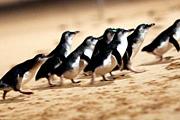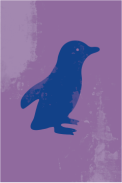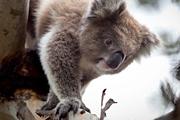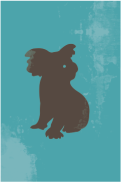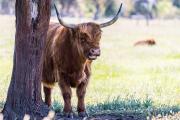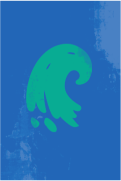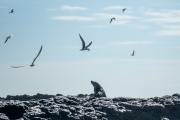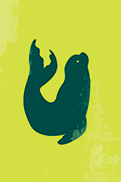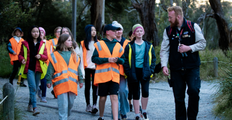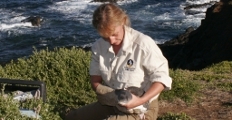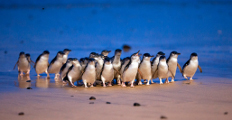All about the Australian fur seal
The Australian fur seal is the largest of eight species of fur seal in the world. They have two layers of fur, a longer outer layer of guard hairs and a fine underfur for warmth.
All seals belong to a group of mammals called pinnipeds. Fur seals are otariids (eared seals) that have tiny ears and use both pairs of flippers when ‘walking’ on land, unlike phocids (true seals), which have internal ears and can’t use their rear flippers for ‘walking’.
Although they can breathe on land, Australian fur seals prefer to live in the water and spend weeks feeding at sea. As you can imagine, they’re very good swimmers!
A history of Australian fur seals
Australian fur seals live throughout the islands of Bass Strait, Tasmania, South Australia, southern Victoria and southern New South Wales.
During the 1800s Australian fur seals were over-harvested throughout the Bass Strait region, including Seal Rocks, and have since recovered to around half their estimated original population size. Sealers became the first Europeans to live in Victoria in order to pursue the seals. In order to protect a dwindling seal population, the Government created a wildlife reserve at Seal Rocks in 1928 and killing seals was banned in Victorian waters in 1975. It has taken a long time for the Australian fur seal population to become healthy again.
Today, Seal Rocks (1.8km off Phillip Island) provides an important breeding area and nursery for around 20,000 Australian fur seals, which is about 25% of the total population. At any given time, there are between 5,000 and 8,000 seals on Seals Rocks!
A day in the life of an Australian fur seal
Seals spend their days swimming, rolling and diving for octopus, squid, cuttlefish and fish. If their prey is too large to swallow, they will take it to the surface where they will toss it around, tearing off pieces of flesh with their teeth, enabling them to swallow these smaller pieces whole.
They have excellent underwater vision and can dive to 200m, spending a lot of time feeding on the bottom of the ocean. It is thought they are able to detect vibrations from prey with their sensitive whiskers.
After seven to ten days fishing out at sea, Australian fur seals return to their colony to rest for two or three days. The number of seals seen at Seal Rocks varies with time of year, tide, temperature, time of day and weather. For example, if conditions are rough at sea more seals come ashore to rest, but in calm and hot weather more seals go swimming.
A year at Seal Rocks
-
October: Females go on long foraging trips, while big males will return to fight for territories. A large breeding male may attract up to 9 females to become his ‘harem’.
-
November: Females return and give birth to a single pup, on average there may be about 9 females per single territorial male. Start of peak pupping season is in late November.
-
December: Males will mate with the females in their ‘harem’. In late December the breeding season ends, and the large breeding males leave Seal Rocks.
-
January: Pups begin learning how to swim. Females undertake short trips before returning to suckle pups.
-
February: Pups grow strong, and their fur begins to turn silver.
-
March: Moulting begins, many seals rest ashore for long periods.
-
April to July: Pups grow strong, with lots of seals coming and going. The pup has its new waterproof, silver coat and is able to spend more time in the water.
-
August: Pups learn to catch fish for themselves
-
September: Pups are starting to wean from their mother’s milk.
The circle of life for Australian fur seals
Seal pups are born in late spring, with each female producing one pup. A week after giving birth, she mates and becomes pregnant again for the next 12 months. Pups are born with a soft, black ‘lanugo’ coat that is not waterproof.
They typically stay on land until they are a few weeks old, where they begin to play in the rockpools and shallows. They spend more time in the water as they moult into their silver, waterproof fur. They are dependent on their mother’s milk until they are around eight to ten months old.
The female (cow) alternates between feeding at sea and resting ashore while feeding her pup. When the cow is at sea feeding, the pup remains at the colony. As the pup gets older, it spends a lot of time swimming and playing with other pups, learning the skills to survive for independence. Usually by 10 to 11 months, the pups are weaned and must catch their own food.
Female seals mature at three or four years of age and may raise a pup every year until they die. They generally spend up to 11 months feeding their pup, but in some cases they will continue feeding both new pup and juvenile at the same time. This means she may have to spend more time fishing to provide enough milk for both young.
Males mature when they are about six years of age but are not big enough to hold breeding territories until they are about nine years of age. During the non-breeding months, males will travel long distances on foraging trips, building up their size. They need to ensure they are big enough to return to the colony and hold a territory against other bulls that may challenge them.
Fur seal research
Since 1966, small research teams have visited Seal Rocks to study the seals' reproductive behaviour and diet and many seals were tagged for identification. Phillip Island Nature Parks continues to study the diet and foraging behaviour.
Population levels are tracked with annual pup counts using drones. Rates of entanglement in marine debris of the Australian fur seal at Seal Rocks are also monitored, with researchers regularly removing entanglements.
Phillip Island Nature Parks is continuously looking into ways to ensure that the Australian fur seal population at Seals Rocks remains healthy. You can help too by making sure that rubbish goes into the bin rather than entering our waterways. Reducing the impact of marine debris in the ocean not only helps our Australian fur seals, but all marine life.
Fur seals by the numbers
Male (called a ‘bull’):
-
Length: 200 – 225cm
-
Weight: 220 – 360kgs
-
Life span: 15-18 years
Female (called a ‘cow’):
-
Length: 125 – 170cm
-
Weight: 36 – 110kgs
-
Lifespan: 20 years
Newborn (called a ‘pup’)
-
Length: 73cm
-
Weight: 7- 8 kg
More Australian fur seal facts
-
They have small ears they use to listen both underwater and in the open air.
-
They can find their pup by its call amongst thousands of others. They use their nose to smell its scent to make sure it is their pup.
-
Their eyes are adapted to see under water. They have large, dark eyes, which allow them to see in the depths of the ocean where it can be very dark, even during the day.
-
They need to breathe air to survive, so when they dive under water they use strong muscles to close off their nostrils. They can hold their breath for up to six minutes!
-
They have long, powerful teeth called canines that they use to bite their prey to catch it. They don’t chew food – they swallow it whole, or if it is too big, take it to the surface and toss it around until smaller pieces break off.
-
They have long whiskers on their snout that they use like ‘feelers’, helping them hunt for prey in very dark water. They can follow the movement of fish through the water.
-
They can rest and sleep at sea. They float on the surface on their side with one flipper up and the other down. This is so they can feel the directions of wind and water movement.
-
They have nails on their flippers that they use to groom their fur so they can stay waterproof. They also help them to scratch itches.
-
Although they move more freely in the water, they can still get about on land and climb well. They can use back flippers individually when moving slowly or swing them forward together when going faster, even galloping over shorter distances faster than you can run!
-
They use their front flippers for swimming and their back flippers for steering. By twisting and using back flippers, they can change direction fast to chase after fish.
-
When they swim, they can cruise along at 9km/hr, or even faster for quick bursts—that’s twice as fast as an Olympic swimmer!
Download our print-friendly Australian fur seal guide here.
We've partnered with Wildlife Coast Cruises to bring you a spectacular 2-hour coastal cruise to visit one of Australia's largest colonies of fur seals, at Seal Rocks off Phillip Island. Find out more here.





